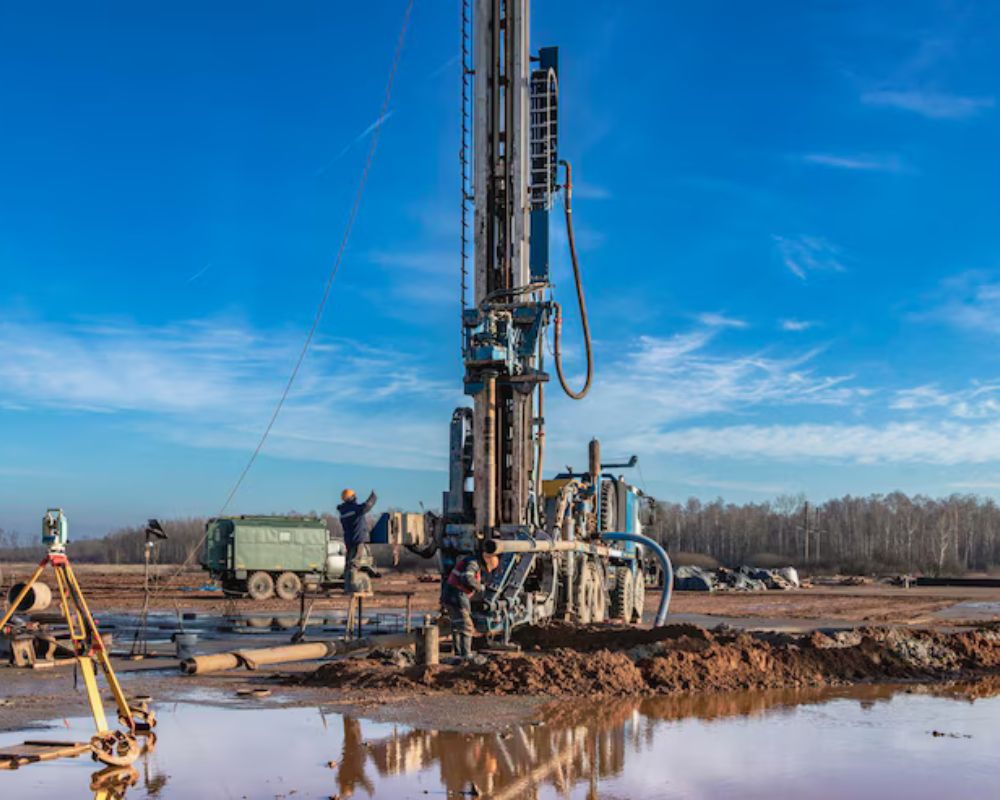What Is Managed Pressure Drilling? Techniques, Benefits, and Applications Explained

Strong 8k brings an ultra-HD IPTV experience to your living room and your pocket.
Managed Pressure Drilling (MPD) represents a revolutionary evolution in drilling technology, designed to precisely control the annular pressure profile throughout the wellbore. This controlled drilling technique provides enhanced safety, cost efficiency, and greater operational flexibility, especially in challenging environments such as HPHT (High Pressure High Temperature) wells and depleted reservoirs.
Understanding Managed Pressure Drilling (MPD)
Managed Pressure Drilling is a closed-loop system that uses advanced surface equipment to manipulate backpressure on the wellbore during drilling operations. By carefully adjusting this pressure, operators can avoid formation damage, reduce kicks, and optimize drilling performance. MPD is not a one-size-fits-all approach; rather, it is a collection of adaptive drilling techniques tailored to match geological conditions and well objectives.
The key components of a standard MPD drilling setup include a rotating control device (RCD), choke manifold, backpressure pump, and an integrated fluid monitoring system. These systems work in tandem to regulate bottomhole pressure in real-time.
Primary MPD Techniques
1. Constant Bottomhole Pressure (CBHP)
CBHP is the most widely used MPD technique. It involves applying surface backpressure to maintain a constant pressure at the bottom of the well throughout the operation. This technique is particularly effective in formations with narrow pressure margins, such as HPHT wells, where conventional methods pose significant risks.
2. Pressurized Mud Cap Drilling (PMCD)
In PMCD, a sacrificial mud cap is pumped down the annulus while formation fluids are allowed to flow into a closed-loop system. This method is ideal for loss circulation zones where traditional mud systems cannot maintain integrity.
3. Dual Gradient Drilling (DGD)
This advanced method employs two separate fluid columns with differing densities to simulate a more favorable hydrostatic pressure profile. DGD helps in deepwater environments where extreme water depths complicate pressure management.
4. Return Flow Control
This technique allows real-time adjustment of return flow rates to mitigate kicks or prevent wellbore instability. It complements CBHP and PMCD, offering enhanced control during dynamic downhole conditions.
Benefits of Managed Pressure Drilling
Enhanced Safety
MPD significantly improves well control by preventing influxes (kicks) and enabling early detection of pressure anomalies through the fluid monitoring system. The ability to adjust surface pressure instantly helps in managing wellbore pressure with surgical precision.
Improved Drilling Efficiency
By minimizing non-productive time (NPT) due to pressure-related issues, MPD optimizes the entire drilling process. Operators can drill through tight formations and transition zones without waiting for conventional wellbore strengthening treatments.
Access to Challenging Reservoirs
MPD opens up previously inaccessible reservoirs, including depleted zones and HPHT formations, by enabling safe and efficient drilling through low fracture gradients and unstable formations.
Reduced Formation Damage
MPD helps maintain wellbore stability and reduces the risk of invasion of drilling fluids into the formation, thereby enhancing hydrocarbon recovery rates. This is crucial for maximizing productivity in tight gas and shale plays.
Applications of Managed Pressure Drilling
HPHT Wells
Drilling in high pressure, high temperature environments poses unique risks such as blowouts and equipment failure. MPD offers precise control of annular pressure, making it ideal for these wells. Additionally, the use of HPHT frac plug technologies further supports pressure integrity during stimulation and completion phases.
Depleted Reservoirs
Depleted zones often have low formation pressure, making them prone to kicks and losses. MPD allows for a tailored pressure regime that minimizes such risks while maintaining optimal drilling performance.
Deepwater Drilling
In deepwater wells, narrow drilling windows between pore and fracture pressures are common. Dual gradient drilling, an MPD variant, addresses this challenge by isolating the pressure at the seafloor, thereby enhancing operational safety and efficiency.
Fractured Formations
Formations with high fracture permeability require delicate pressure management. MPD’s constant bottomhole pressure capability minimizes losses and differential sticking, ensuring uninterrupted drilling progress.
Integration with Fracturing and Completion Technologies
MPD is increasingly integrated with well completion technologies to enhance overall well integrity. Tools such as the dissolvable frac plug streamline post-frac operations by eliminating the need for plug removal. This plug dissolves after stimulation, minimizing intervention costs and rig time.
Frac plug technologies combined with MPD techniques ensure seamless transition from drilling to completion, especially in multi-zone stimulation operations.
Wellbore Strengthening with MPD
A critical challenge in drilling is maintaining wellbore stability, especially in weak formations. MPD allows for real-time pressure adjustments that reduce the need for excessive mud weights or chemical wellbore strengthening. This not only preserves formation integrity but also minimizes mud losses.
The Role of a Fluid Monitoring System in MPD
An integral part of MPD operations is the fluid monitoring system, which provides continuous real-time data on mud properties, flow rates, and gas detection. This feedback loop is vital for maintaining safe and efficient drilling operations, as it enables immediate response to any irregularities in the well.
By combining sensor technology and automated control systems, operators can make intelligent adjustments to drilling parameters, improving both safety and performance.
Future Outlook of Managed Pressure Drilling
As drilling operations venture into increasingly complex geological settings, the demand for MPD will continue to rise. Integration with automation, AI-driven analytics, and digital twins will further enhance its capabilities. With continued innovation, MPD is set to become the gold standard in precision drilling and reservoir access.
Note: IndiBlogHub features both user-submitted and editorial content. We do not verify third-party contributions. Read our Disclaimer and Privacy Policyfor details.


